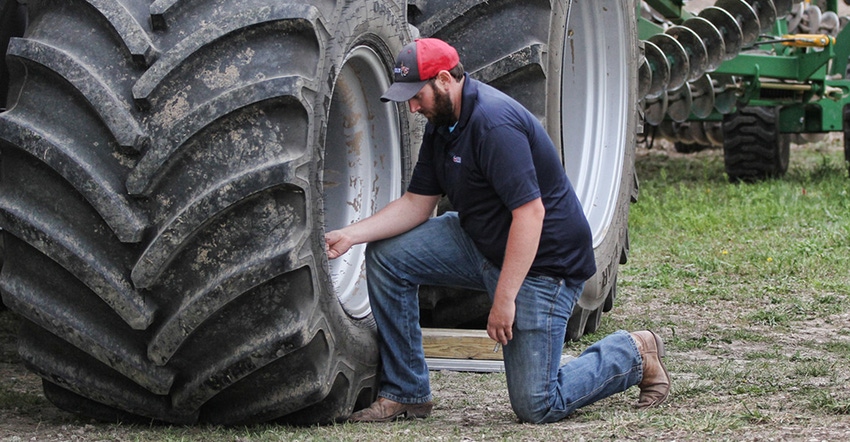October 5, 2016

Sponsored Content
Today’s farm equipment is heavier and more powerful than ever before — capable of doing more work in less time — but with new advancements come new challenges, including road lope, power hop, soil compaction and more. With the help of the Titan Grizz Squad, however, these performance challenges can be eliminated — often through a free consultation and basic adjustment.
The Grizz Squad offers technical support throughout 48 states and Canada.
The Grizz Squad, Titan’s nationwide team of expert field technicians, has spent the last five years consulting with growers, helping them improve productivity in the field through better tire care and selection practices. Growing from a team of three to 22 specialists was necessary to meet the demand for expert technical support throughout North America. Today, they cover more than 4 million square miles and average roughly 5,000 farm visits per year — documenting the performance problem encountered, the action taken and the results achieved.
THE FINDINGS
The thousands of consultations over the last five years have yielded some common themes. Road lope, power hop and soil compaction are among the most common performance challenges. The Grizz Squad has found that in roughly 60 percent of the cases, the performance issues can be solved by simple adjustments to the equipment. The other 40 percent should consider switching to an alternative tire size and/or configuration to optimize equipment.
THE TEAM’S APPROACH
Before recommending a change to a better-suited tire configuration, the Grizz Squad strives to optimize the equipment with basic adjustments — a consultative, five-step approach.
Technicians bring portable scales to every farm visit to weigh each axle of the machine experiencing performance problems.
The optimum operating inflation pressures are then calculated for each task conducted by that machine.
A ballasting recommendation, if necessary, identifies a need to adjust weight distribution on the machine.
In cases where ride problems are not remedied with basic adjustments, a run-out service may be conducted with a laser instrument designed to help optimize wheel and tire alignment.
If adjustments still do not remedy the performance challenge, technicians will often recommend a tire size or configuration better suited to the grower’s application.
TIRE CONFIGURATION EXAMPLE
Growers often stick with the tire size and configuration that came standard on their equipment. However, a standard configuration doesn’t always deliver the best results. For instance, up to 80 percent of MFWD tractors leave the factory with narrow row crop duals. Yet, according to an independent research study conducted in November 2015, deployed via AgWeb, only 37 percent of growers actually have a need to run between the rows post-emergence. The other 63 percent should not be running narrow duals.
As an alternative to standard duals, Titan offers Goodyear® Extreme Flotation™ tires. For example, by switching to Goodyear LSW1000/40R32 fronts and LSW1100/45R46 rears, a grower can expect significant reductions in road lope, power hop and soil compaction, as well as improvements to turning radius, traction, ride quality and lateral stability.
To schedule a free consultation with the Grizz Squad, email the team at [email protected].
About the Author(s)
You May Also Like




